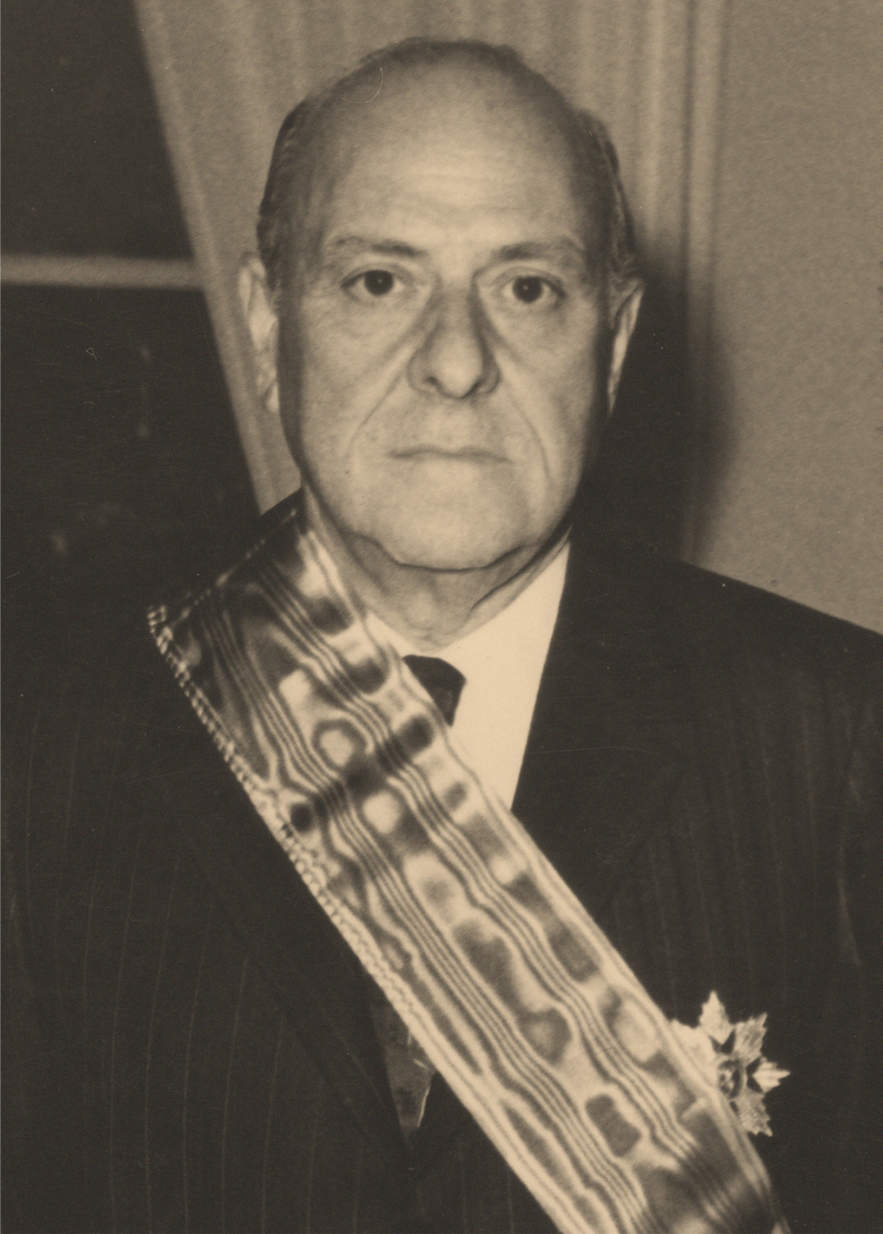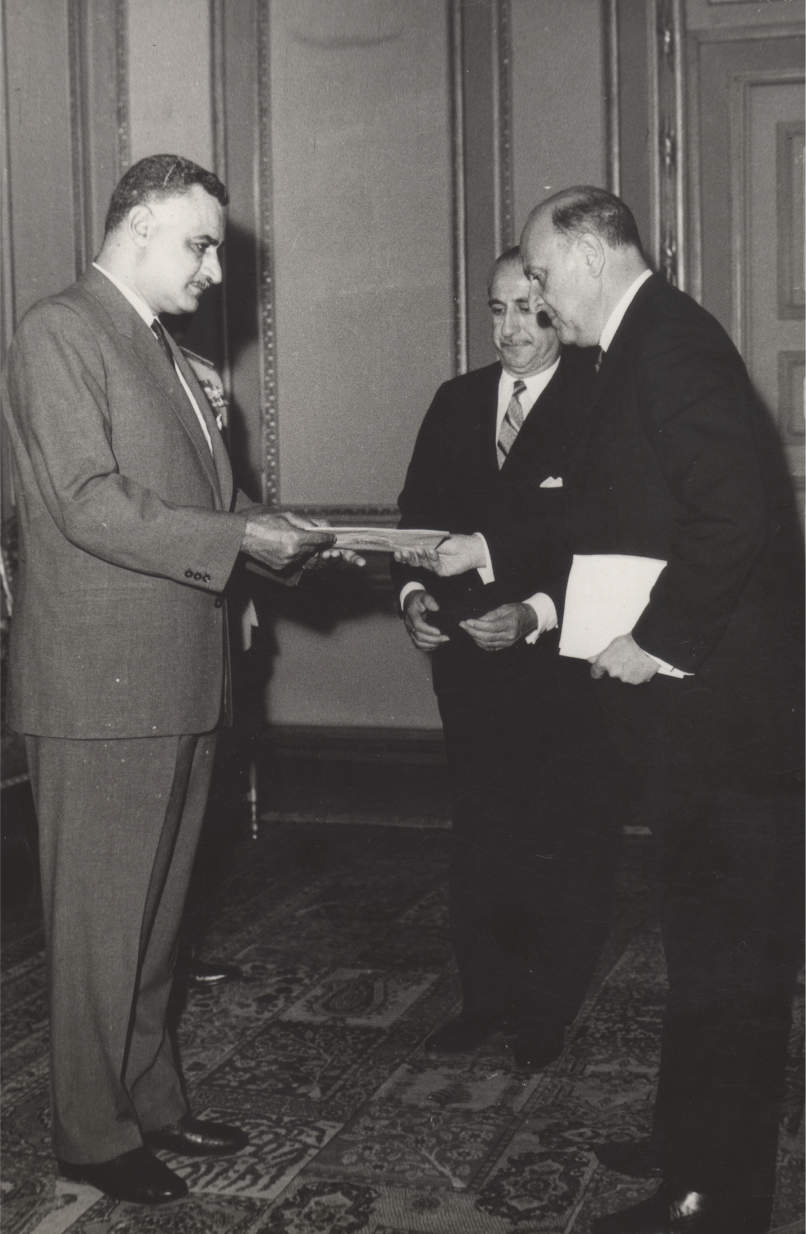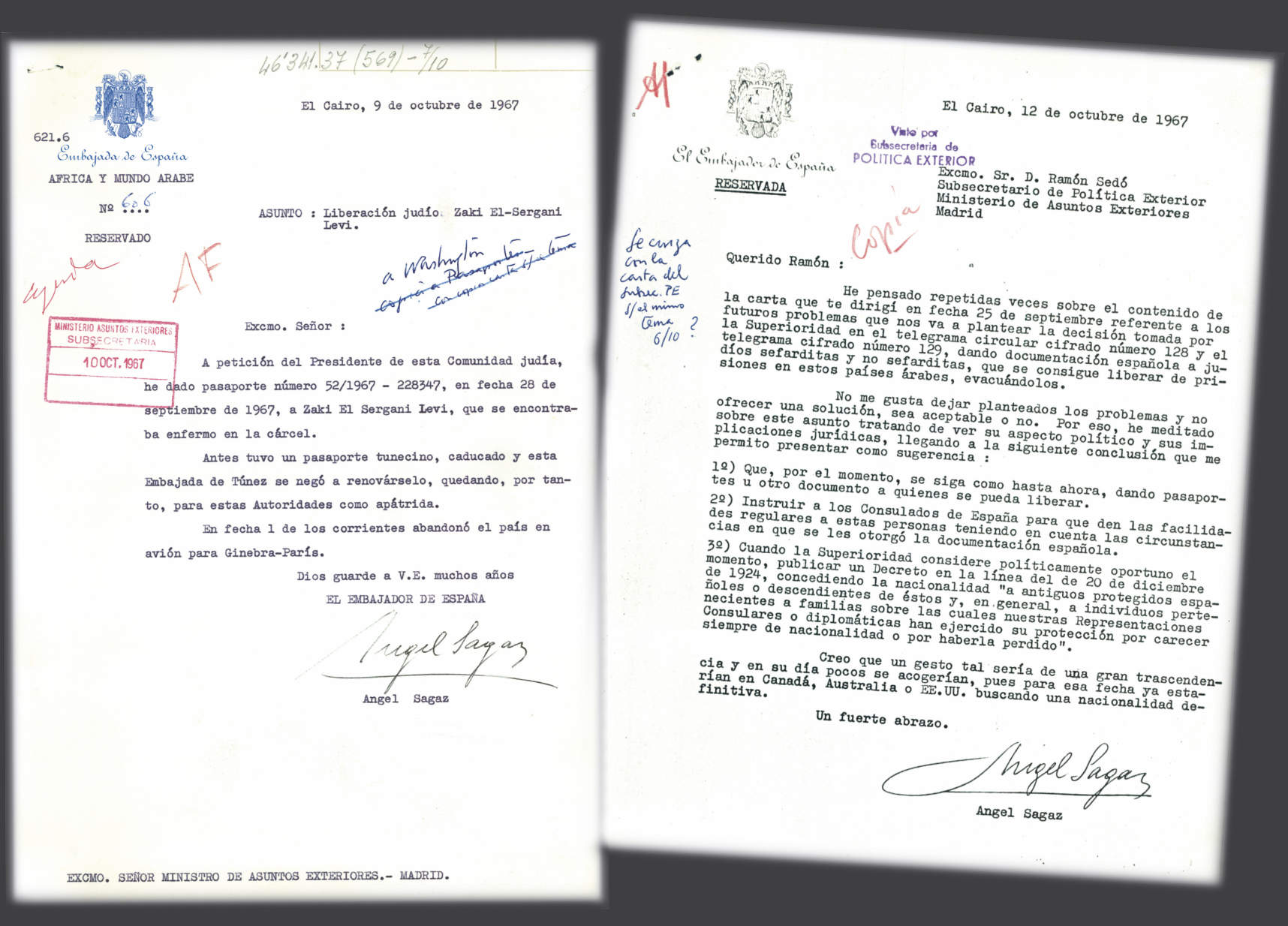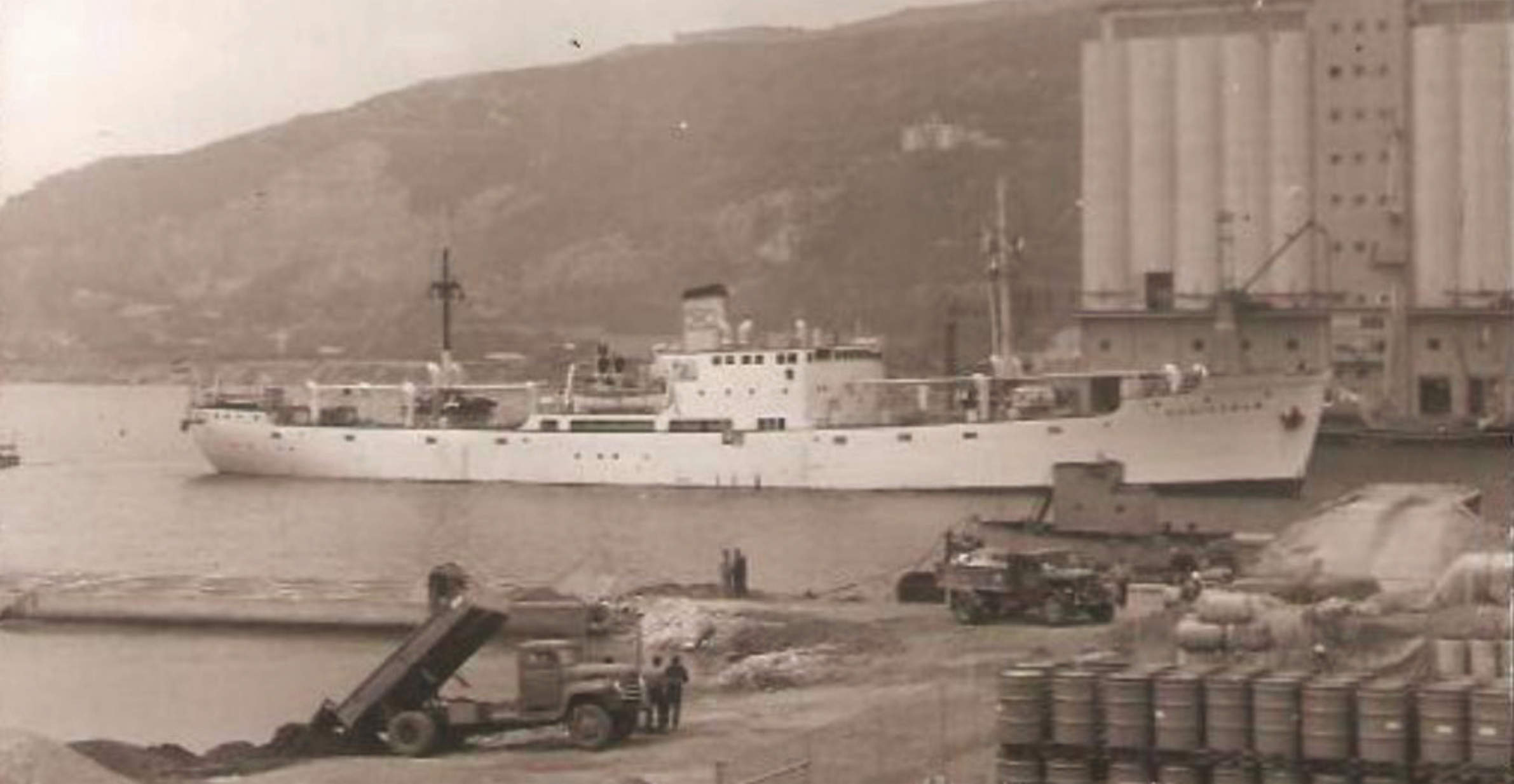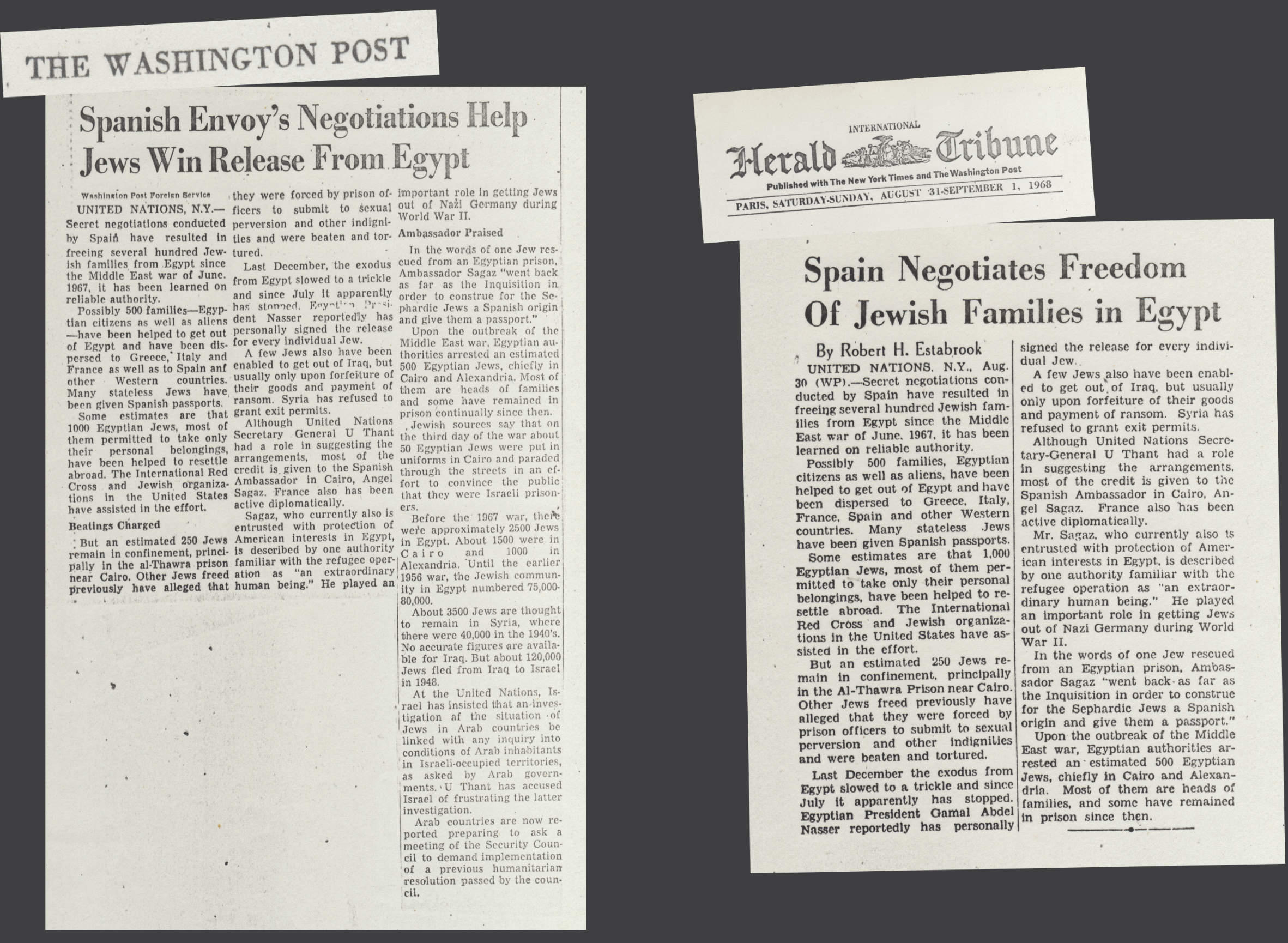POST-HOLOCAUST HUMANITARIAN ACTIONS
AMBASSADOR (CAIRO, 1966-1972)

ÁNGEL SAGAZ ZUBELZU
The evacuation of Egypt: Operation Passport 128
More than 1500 Jews — of whom 620 had been liberated from concentration camps or prisons — were able to leave Egypt with the necessary caution and discretion in three separate operations between 1967 and 1971. This was thanks to the intervention of the Spanish government and, especially, the extraordinary humanitarian efforts of Ambassador Ángel Sagaz (1913-1974).
The action would become known under the code name Operation Passport 128: the number of the secret telegram authorizing the protection of Egyptian Jews, which was stamped on the Spanish passports given to them.
To obtain their freedom and exit permits, Sagaz had to deal with many different Egyptian authorities, from police officers of every rank to General Mahmud Abdel Rehim, Undersecretary of the Minister of the Interior, and from the Interior Minister himself, Chaarawi Gomaa, all the way up to President Nasser. Sagaz told them that the Embassy was authorized to issue Spanish passports to these individuals by virtue of the protection that Spain had provided in this part of the world to the Jewish communities at the time of the Ottoman capitulations, and taking into account legislation in this regard dating back to 1924.
It was a question, he said,of stateless Jews -"Sephardim or not" — residing on Egyptian territory and who, according to Spanish norms, "have a right to documents from Spain since they are Sephardim of Spanish origin".
To assist in getting detained Jews out of jail, the Ambassador himself would show up at the prisons of Abu-Zaabal, Turah and Barrages. His task: to convince police officials that these fake Sephardim "had at one time the right to Spanish protection or enjoyed such protection", and therefore Madrid had to conduct their defence. After achieving his purpose, Sagaz used vehicles from the Consulate fleet with diplomatic license plates to personally accompany many of these freed Jews to the port of Alexandria or to Cairo's airport.
During the first operation, between 1967 and 1968, the majority left by boat for Marseilles, Barcelona, and some other ports in Italy. The Spanish ships the Benidorm and the Benicarló took part in the evacuation; the blind, elderly and ill were airlifted out. Afterwards, some Jews settled permanently in Barcelona.
During the second operation, in 1969-1970, eight Jews were evacuated to Paris by plane every two days. There, they had to wait for their emigration to other countries (except for Israel) to be processed, according to the agreement that Spain had made with Nasser.
Their departure was carried out in total secrecy until the operation finally made it into the international press.
ÚRSULA ZINSEL
Along with the praise worthy attitude of Ambassador Ángel Sagaz, it is only fair to highlight the tireless efforts of his wife, Úrsula Zinsel (seen above next to Foreign Minister López Bravo), who, as the Honorary Chair of the Catholic charity Caritas Egypt, visited detained Jews in prison to bring them food, clothing and medicine.
OTHER PROTECTION OPERATIONS
- 1956-1958
- Defence of property sequestered from Spanish Jews in Egypt
- 1957-1961
- Assisting approximately 4500 Jews to leave Morocco
- 1967
- Assisting hundreds of Jews to leave Morocco
- 1969-1972
- Departure of 50 Syrian Jews who were refugees in Lebanon
- 1970
- Evacuation of 5 Jews from Iraq
- 1970
- Evacuation of 40 Jews from Sudan
The success of these operations was made possible by Spain's excellent relations with Arab countries.

 Loading
Loading

